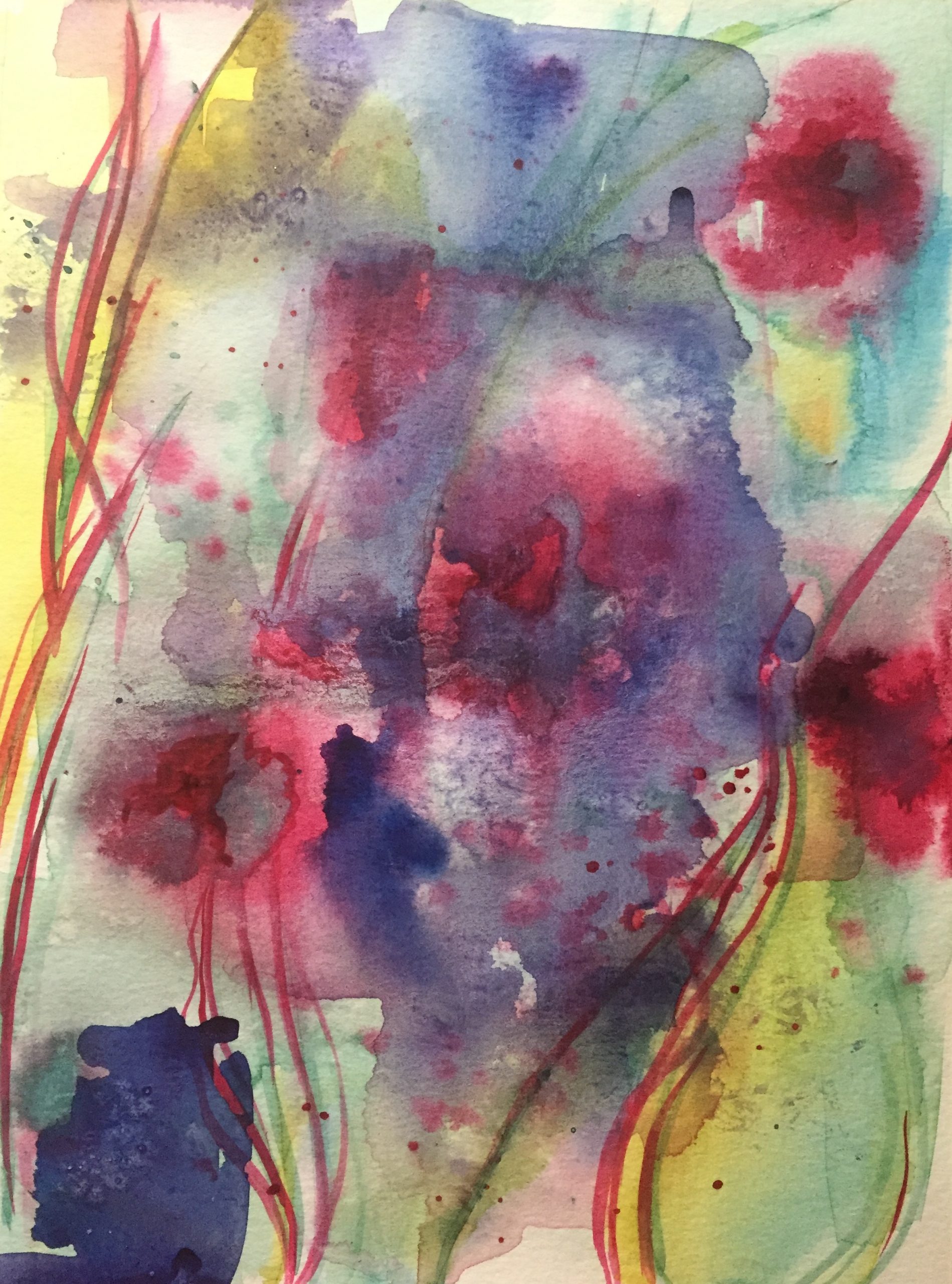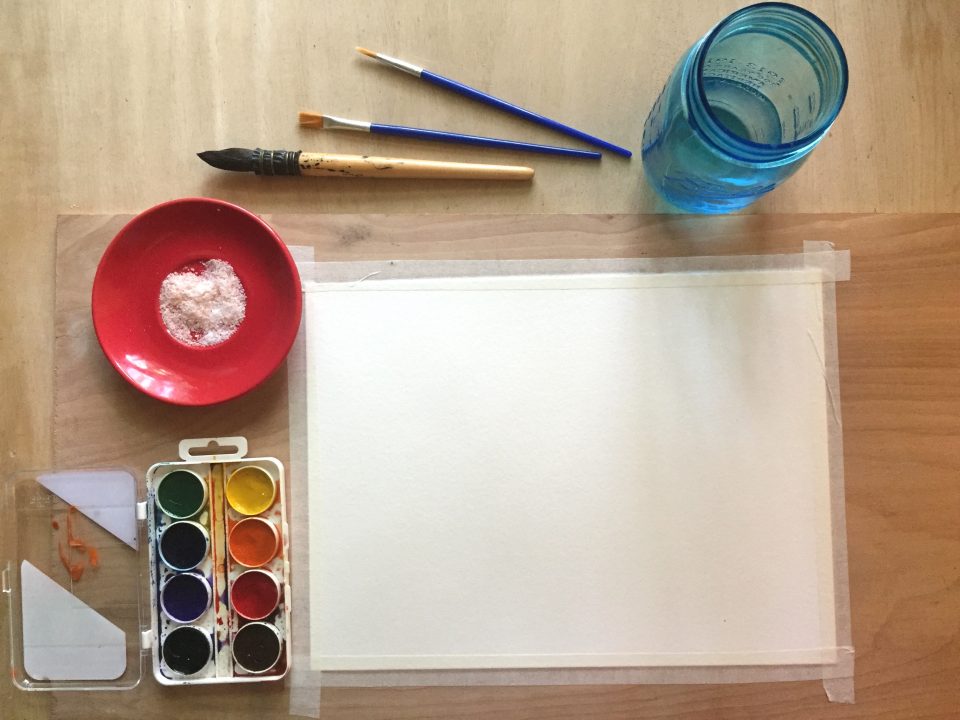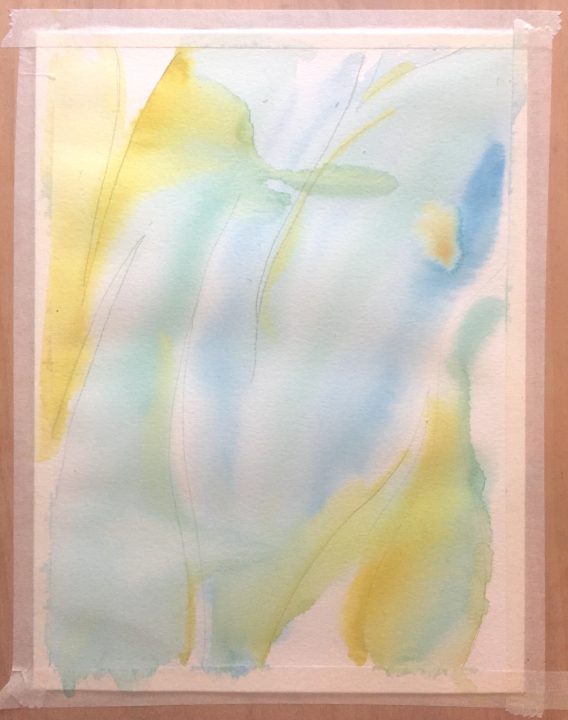Watercolor Worlds

Explore abstract painting through layers of watercolor.
We want to see your creations! Share on social media @hirshhorn with #HirshhornInsideOut.
Time: 30–45 minutes
Skill Level: intermediate
Topic: Abstraction and watercolor
LOOK CLOSELY

Lily Harmon, Landscape, (n.d). Hirshhorn Museum and Sculpture Garden, Smithsonian Institution, Washington, DC, Gift of Joseph H. Hirshhorn, 1966.
Look closely. Let your eyes wander up, down, and side to side. What do you see? Notice colors and shapes. Can you identify any areas where the color looks darker or lighter? Or how the paint is applied in different ways?
This watercolor painting is called Landscape, by Lily Harmon. A landscape usually depicts a place in nature and often includes trees, water, mountains, and other landforms. Harmon’s Landscape is very abstract, meaning it uses colors and shapes rather than identifiable forms or realistic colors. It also might reflect the artist’s memories or feelings before the motif. Based on the colors and shapes, what type of landscapes do you think these might be? How do they each make you feel?
Lily Harmon (1912–1998) was an American artist. In her 60-year career, she created paintings, drawings, lithographs, assemblages, and illustrations. She wrote an autobiography titled Freehand: The Life and Art of a Lady Who Made her own Rules, published in 1981. Harmon was born and raised in New Haven, Connecticut. Her mother thought that art was a nice hobby, but did not take her work seriously. Lily Harmon told her mother, “It’s my life’s work.” She left home to begin her studies at the age of 17, and attended classes at the Cape Cod School of Art in the oceanside town of Provincetown, Massachusetts. She continued her studies at the Yale School of Fine Arts, then in Paris, and later in New York City, where she earned her first solo exhibition in 1944.
She drew inspiration from many different artists from diverse backgrounds, including Mexican muralists; Japanese artists, whose use of abstract form influenced her work; and Paul Klee, whose use of color and playful style she admired. She also said, “I was tremendously influenced by El Greco and his swirling lines.” Her work explored many different styles across her career.
Interesting fact: Lily Harmon met her third husband, Joseph H. Hirshhorn—the founder of the Hirshhorn Museum and Sculpture Garden—when he visited her studio to look at her artwork.
MAKE IT!
- Gather: Watercolors, paint brush(es), a cup of water, paper towel, pencil, and watercolor paper or other thick paper; salt is optional.

- Imagine a favorite place that you have visited, or a place where you would like to be. Close your eyes. What about this place is interesting to you? What emotions do you feel? What colors do you see?
- Make a light pencil sketch. Think about the shapes that are most important to include in your painting. In Landscape, Harmon painted in an abstract style. She layered colors, lines, and shapes to create the feeling of a place. To create your own abstracted landscape, think about the shapes of the land, sky, water, or other land features you want to paint. Our example work has long flowy lines that give the feeling of grass, trees, or something blowing in the wind.

- Begin painting! We chose to start with some cool colors with a splash of yellow for our first layer. Paint a layer and then let it dry.

- Add layers! When we look closely at Lily Harmon’s Landscape, we can see that there are many layers of paint. Which colors do you think she painted first? Allow each layer time to dry and then add more layers of paint!

